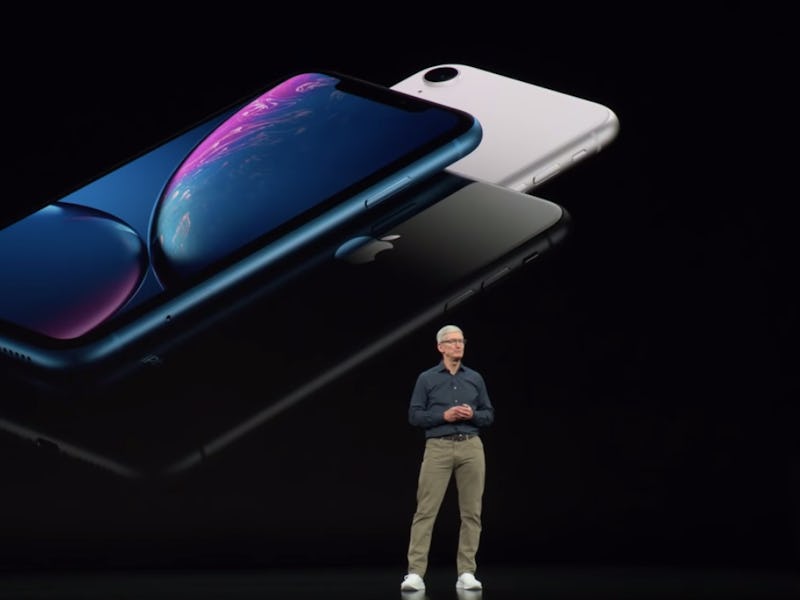Apple Earnings Affirms the Age of the iPhone Is Over: What Could Come Next
Apple's on the hunt for a new cash cow.

To no one’s surprise, Apple reported no profit growth for its most recent quarter during its Tuesday earnings call. The Cupertino-based company raked in $84.3 billion in revenue during the all-important holiday season, more than 4 percent down from the year prior. Apple saw this coming, sending a warning letter to shareholders on Jan. 2 saying that revenue would be less than expected.
The takeaway from the letter and the call is pretty clear. Economic headwinds aside, the smartphone that has defined Apple for so many years is no longer a growing market. Cook stated that iPhone revenue fell 15 percent during the 2018 holiday season compared to 2017. He explained that the decline was caused by the US dollar’s strength making the phone pricy around the world, lower iPhone subsidies specifically in Japan, and Apple’s battery replacement program, which he said may be stifling upgrades.
But regardless of how carefully the sentence is hedged, the situation remains clear: The golden age of the iPhone is over. Today Apple reported the first holiday sales decline since 2001, the year it first launched the iPod. Based on Cook’s remarks, here’s where Apple thinks it is most likely to find its next hit.
We Want Wearables
One possibility is wearables. SVP Luca Maestri said on the conference call that Apple’s wearables business is already “approaching the size of a Fortune 200 company.” The company reported a nearly 50 percent increase in sales for its wearables products, like the Apple Watch Series and AirPods. The AirPods have been a consistent winner for the company, and are due for a refresh. But the real star of last year was the release of Series 4, which is quickly becoming the face of Apple’s health tech and services business.
The AirPods were loathed upon release but are massive cash cow for Apple now.
Upcoming Apple products have been rumored to come with even more health features. Patents and reports about the upcoming AirPods 2 have already stated that the earbuds will come with biometric sensors and health applications.
Even if you don’t see yourself as the kind of person who will ever wear a smartwatch and start counting your steps, your employer and insurer might feel differently. To that end, Apple also announced on Tuesday a new partnership with the insurance giant Aetna to create an app to incentivize healthier living with discounts, using data pulled from — you guessed it! — an Apple Watch.
Apple Pay Could Be a Sleeping Giant
Apple Pay is not the most exciting of the company’s innovations, but Cook still pointed to the platform on the call, noting that “Apple Pay transactions hit 1.8 billion, well over twice year-ago levels.” Those are pennies compared to what the big payments processors do (Mastercard processed about 80 billion transactions in 2012, according to one estimate.)
The payment service debuted all the way back in 2016, and takes a 0.15 percent transaction cut from the bank every time someone decides to pay with their iPhone. That’s cheaper than most processing fees and, more importantly, the payments system is potentially contactless, which saves time and could even present public health benefits.
Getting people to use a new payments system takes forever, though, thanks to a chicken or the egg problem. No one wants to use money they can’t spend everywhere, but no merchants will accept a new payment method until all their customers are using it. Apple’s uniquely situated to circumvent this problem, however, thanks to the nearly 1 billion iPhones already being used.
Could Apple Pay be the answer to Apple iPhone dependance?
This news comes in drips, no one batted an eye when, this week, Apple Pay announced that Jack in the Box and Taco Bell would begin accepting its payments. But if Apple can quietly continue enrolling vendors, Apple Pay could become a payments incumbent overnight. Sorry crypto.
Double Down on Subscription Services
Finally, Maestri highlighted another front Apple could grow out to replace its iPhone cash cow, by noting that “services revenue hit new records in all 5 geographic segments.” The company reported more than 360 million paid subscribers to services, like Apple Music and iCloud.
Fortunately for Apple, providing and even coming up with new services is simply more profitable for the company, which reported that it earned 63.8 percent gross margins on services, almost twice the gross margin it makes from building hardware.
It makes sense, then, that Apple is reportedly gearing up to launch a gaming service and a Netflix-like TV streaming service. The company could offer deals to iPhone, iPad, and Mac owners to incentivize subscriptions.
Though reinventing TV has been a key part of the post-Jobs vision for Apple since at least 2011 the Apple TV wasn’t it. But without the sure success of iPhone to fall back on, that could be about to change. As they say, necessity is the mother of invention.